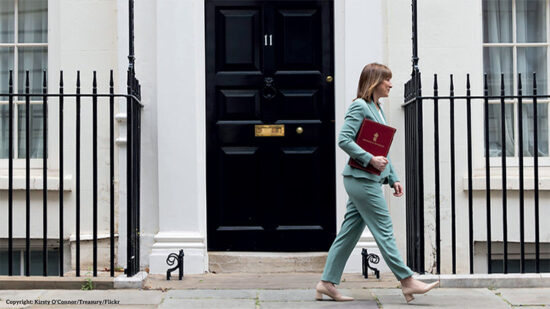Sterling
Sterling had a mixed week last week, rising against the US dollar that was out of favour with investors ahead of upcoming debt ceiling talks, but falling to new recent lows against the Euro as the ECB kept rates unchanged and gave no hints that Euro rates might fall any further.
The Bank of England kept UK rates unchanged and kept the asset purchase facility steady at £375bn, both decisions expected by the market. The UK economy continues to show signs of weakness, with both manufacturing and industrial production coming out weaker than expected and consumer spending over the Christmas period not as buoyant as at first thought.
Industrial output grew less than expected in November, despite a strong rebound in oil and gas production, adding to evidence that the economy may have contracted in the last three months of 2012. Manufacturing output fell 0.3% on the month – less than a 1.3% fall seen in October, but worse than forecasts of a 0.5% rise. Non-seasonally adjusted construction figures, also released on Friday, showed a 3.4% fall on the month in output and a 9.8% annual drop – undermining hopes of a rebound in the sector.
With investors more confident that the Sovereign debt issues in Europe have eased the Euro is starting to reclaim some of its strength from the depressed levels of the last two years. It is too early to say that there will not be more problems, but for now it could push on even higher in the short term, so we look for the 1.20 area to be tested at some stage soon. Against the US dollar, Sterling is following in the slipstream of the improving Euro, and could push on further towards 1.6200 as uncertainty starts to appear over the upcoming debt ceiling negotiations.
Inflation data will be important, as investors look for an easing in CPI. If it remains high, towards 3.0% it will make it more difficult for the Bank of England to even consider lowering rates any further, or even add more QE. Overall we see a continuation of this week’s trade, slightly higher against the US dollar, lower versus the EUR.
US Dollar
The dollar held its own for the early part of last week, with weak Euro data offsetting uncertainty around the upcoming debt ceiling talks in the US. However with the ECB announcement that they had not considered lowering interest rates’ and a more confident stance from Mr Draghi, the Euro rose sharply, dragging all the major currencies with it.
The only exception was against the Japanese Yen, where the dollar made new 2 ½ year highs after new Prime Minister Abe reiterated his views that the Bank of Japan be more aggressive in stimulating the economy, increase their inflation target to 2% and consider adding employment to its mandate of price stability.
The current move down in the dollar is less about fundamentals and more about renewed confidence that Europe may be over the worst with regards their Sovereign debt issues. It was mentioned by a few EU officials last week, and while it is probably too early to say that there will not be any more shocks, things are now a lot calmer than they have been. Mr Draghi, in his statement are the interest rate announcement, said he foresaw weakness in Europe in the first half of 2013, but that signs of the recovery would start to appear in the second half.
In the US, there were no numbers of any great consequence. After the recent comments from the Federal Reserve that they had considered looking at ending the Quantitative Easing, Bond yields rose, with the benchmark 30 year Bond moving over 3% and the 10 year up over 20bp from the previous auction. The dollar had risen on these comments, but the move had quickly fizzled out.
Investors are now looking forward to the resumption of talks between President Obama and the Republicans regarding spending cuts, and perhaps more importantly, the debt ceiling.
Republicans have said they will drive a hard bargain, and have linked an increase in the debt ceiling to obtaining significant cuts in various spending programmes, including Medicare. It seems improbable that the debt ceiling will not be raised, and that the US will be unable to pay its bills, but this is US politics and anything can happen. The closer it gets to the end of February with no result in sight, the more nervous investors will get.
There is plenty of data out this week that should give an insight into how the US economy is performing. The manufacturing indices will followed closely, as will the sales and housing data. The thoughts of the Fed in the Beige book will also have added interest since they have mentioned that they were discussing timeframes for ending QE. On balance we see a weaker dollar again this week, but we could see it rise against the Yen to touch 90 for the first time since June 2010.
Euro
Despite the European economy being in a dire state and Euro-wide unemployment reaching a new high, the Euro gained sharply towards the end of last week after European Central Bank President Mario Draghi signalled that there had been no talk of interest rate cuts or more stimulus packages at their latest meeting.
The single currency nearly revisited the recent high at 1.3300 against the US dollar and saw new lows versus Sterling around 1.2140, as investors took heart that perhaps the worst may be over, as several EU members had stated earlier in the week.
Mr Draghi was a bit more guarded, saying that economic weakness was expected to extend into 2013, but the region should gradually recover later in the year and risks to its outlook were to the downside. Certainly Mr Draghi’s tone was far more upbeat than that seen at recent press meetings, and he clearly feels that the financial problems have diminished. This was supported by investors who were happy to buy both Spanish and Italian Bonds at much lower level than at previous auctions. Spanish 2 year note yields fell by 29bp to 2.01% while Italian notes of the same duration were down 19bp, and 10 years down 17bp.
The Foreign Exchange markets typically look forward and do not trade on what is currently happening, unless there are some unforeseen surprises. Thus it looks like investors are pre-empting a recovery later in 2013 in the Euro area and are looking to cover up those short Euro positions they have been running. It will not be one-way traffic, that is for sure, but we continue to look for 1.35 Eur/USD and 1.20 GBP/Eur in the not too distant future.
The figures probably won’t be that good but investors seem to have the bit between their teeth at the moment, so would expect the Euro to edge upwards and make new highs across the board.
Australian Dollar
The Aussie showed some renewed strength last week helped by strong trade data out of China that saw their exports rise by 14% and imports by 6%. The AUD rose to levels last seen in August against a weak Sterling, while pushing as high as 1.0585 against the US dollar.
Against the Japanese Yen, which has been in free fall of late, it touched four year highs. Being one of its biggest trading partners, the Aussie stands to gain more than most of its industrialized competitors if China starts to heat up again, so investors were quick to see the potential. With some of the highest rates in the industrialized world, this was an added attraction.
With investors now less risk averse, the Aussie has become a favourite currency with investors. Commodity prices may not be booming but there are tentative signs that the countries major importer, China, may be starting to pick up steam. Further uncertainty is likely in the US ahead of the debt ceiling talks, so the Aussie is likely to stay in demand in the near term.
The Aussie is currently seen as the currency of choice, and is outperforming its commodity peers such as the Canadian dollar and South African Rand. This is due to its close ties to the China, and with signs that their economy is on the move, there may be further to run. We would look for modest gains this week for the AUD.
New Zealand Dollar
The Kiwi pushed on last week despite a worse than expect trade deficit and a housing market that fell more than expected. The boost came from better than expected Chinese trade data that saw exports growing by more than 14% and imports by 6%. With interest rates higher than most of its major competitors, the kiwi has become a currency of choice among investors, along with its neighbour, the Australian dollar, and it touched a 4 year high against a weak Yen last week.
The trade balance for November recorded an actual deficit of –NZ$700m, compared with a previous reading of – NZ$718m, while analysts expectations were for a – NZ$670m. At the same time, New Zealand’s exports expanded during November to 3.81 billion, after recording 3.46 billion a month earlier.
New Zealand building consents fell 5.4% in November as the typically volatile demand to build new apartments shrank to its lowest level since April 2011. The Kiwi continues to attract safe haven funds and with interest rates higher than in most industrialized countries it should remain well supported in the near term. Also helping are the signs out of China, New Zealand’s second biggest export market that the economy is starting to pick p from its 2012 lull.
Data this week shouldn’t impact the Kiwi, it looks set to stay in demand for the time being.
Canadian Dollar
The Canadian dollar enjoyed a quiet week, hanging on to its gains made after the Non-Farm Payrolls data out of the US. It was also helped by its own employment data which showed that the economy has been taking on new hires at a robust pace.
Early data last week was on the positive side with the Ivey Purchasing Managers Index showing a modest rise to 52.8 from a forecast 51.3%, the first rise in 5 months. However, the value of Building Permits issued slumped to the lowest level since January 2012 mainly due to the slowdown in housing and non-housing construction in Ontario.
The 17.9% fall more than wiped out the previous months rise of 15%. The corporate earnings season in the US is getting underway and this will be important for the CAD as the US is the country’s major trading partner. First indications were positive, with Alcoa, the largest aluminium producer in North America, producing better than expected results.
Little in the way of market moving data releases this week, so it looks like another quiet week in progress. The CAD should retain its recent strength against the US dollar as investors remain wary of events south of the border.
However, of all the commodity trading currencies, the CAD may lose out to the Australian dollar as a currency of preference for investors given its closer ties to China, which appears to be improving month by month. Against Sterling, we see a 1.5700-1.5900 range persisting for now.
Chinese Yuan
The Yuan remained relatively stable last week but there were encouraging signs that the economy was starting to move forward after a stuttering 2012. Export growth rebounded surprisingly sharply to a seven-month high in December, a strong finish to the year after seven straight quarters of slowdown.
Trade data released on Thursday showed the value of China’s exports grew 14.1% last month compared with a year earlier, bettering analysts forecasts, who had expected annual growth of just 4%.
However, the pick-up in exports growth from November’s 2.9% rise was likely accentuated by lower comparison figures a year ago and exporters clearing year-end orders. The value of imports grew 6% on the year to December, also beating market forecasts for a 3% rise and quickening from zero growth in November, lifting the trade surplus a two-month high of $31.6 billion. The year-end export surge was not enough to help China meet its 2012 growth targets for trade, underlining that exports have been the biggest drag on its economy for two years.
It is important for world growth that China continues to rebound, and the pick-up in trade will certainly help. The country has had a near 10% growth rate for most of the past 30 years, and analysts will be looking closely at this week’s GDP numbers. While it may not directly affect the Yuan exchange rate, it will have implications globally, particularly among China’s biggest trading partners.
Japanese Yen
The Yen continued its precipitous fall last week, nearing a 2 ½ year low on expectations that the Central Bank will take fresh measures to boost the economy at their next meeting on the 21-22 January.
The currency briefly recovered mid week, after investors took profit on short positions, but these gains were soon eroded as Prime Minister Shinzo Abe reiterated his call for the central bank to adopt a more aggressive stance towards boosting the economy and target an inflation level of 2%. He added to those comments on Friday by adding that the Central bank should consider adding employment to its existing mandate of price stability.
The Yen has now lost 12% in value against the US Dollar since December and a correction is a strong possibility in the short term. The Prime Minister is pressuring the Bank of Japan and threatening to put his own candidate in as governor when the post comes up for grabs later this year. The question remains, will his policies work?
A shorter trading week this week with a Bank Holiday on Monday, and not too much in the way of significant data releases. The main driver will be the push by Mr Abe for the more monetary easing and the Yen could be under pressure again leading u to the Bank of Japan meeting on the 21 Jan. However be aware that markets that move as far and fast as we have seen with the Yen over that last 6 weeks have a habit of retracing some of that move, so beware profit-taking.
South African Rand
The Rand lost ground recently but managed to stabilise early last week as the prospect of strikes in the agriculture industry damped investor demand for the currency. Agriculture workers are demanding that the minimum wage be increased to 150 Rand per day from 70 Rand currently, and there have already been reports of violence and damage to vineyards and property.
These problems mirror the actions of the mine workers last year which caused investors to give the Rand a wide berth and saw it rise to 9.00 against the dollar. However the worries were eased mid week as the US largest aluminium producer, Alcoa, announced its figures and also predicted global demand for the commodity will increase 7% in 2013 as the Chinese economy rebounds and Brazil, Russia and India increase consumption.
By mid week the Rand started to claw back some of the lost ground as trade figures out of China confirmed that they increased imports by 6% from a year earlier, while exports were up 14.1%. All the major metals markets saw gains, helping to push the Rand below the 8.60 level against the US dollar, but concerns about labour unrest saw the currency touch 8.70 by the end of the week, and above 14.0 against Sterling.
If the labour issues can be maintained, the rand would offer a good investment in the short term, but it’s only for the investors with deep pockets.
For more currency data and information on how to assist your clients with their international money transfers, please visit the International Adviser Currency Zone powered by Moneycorp.








